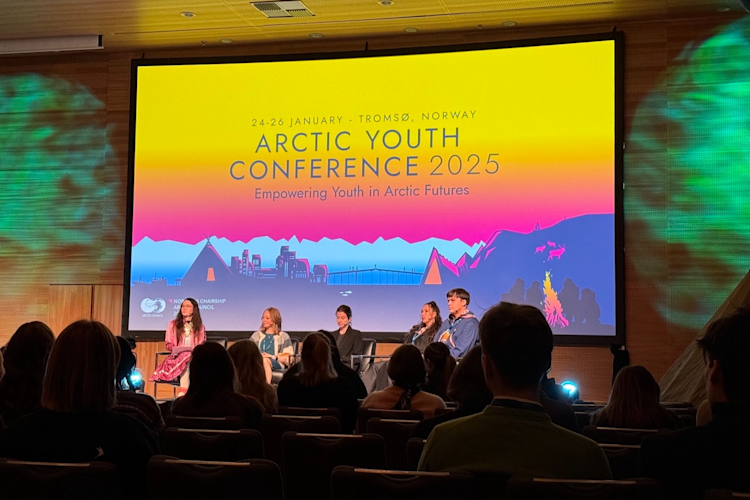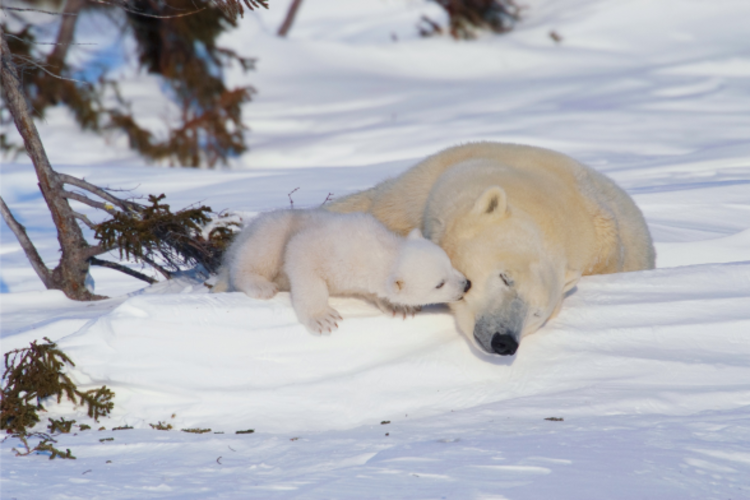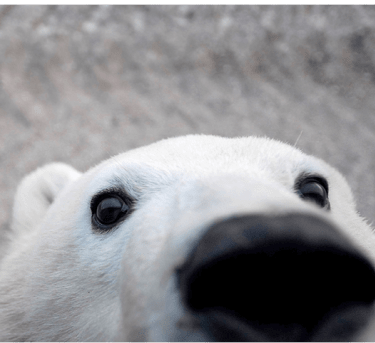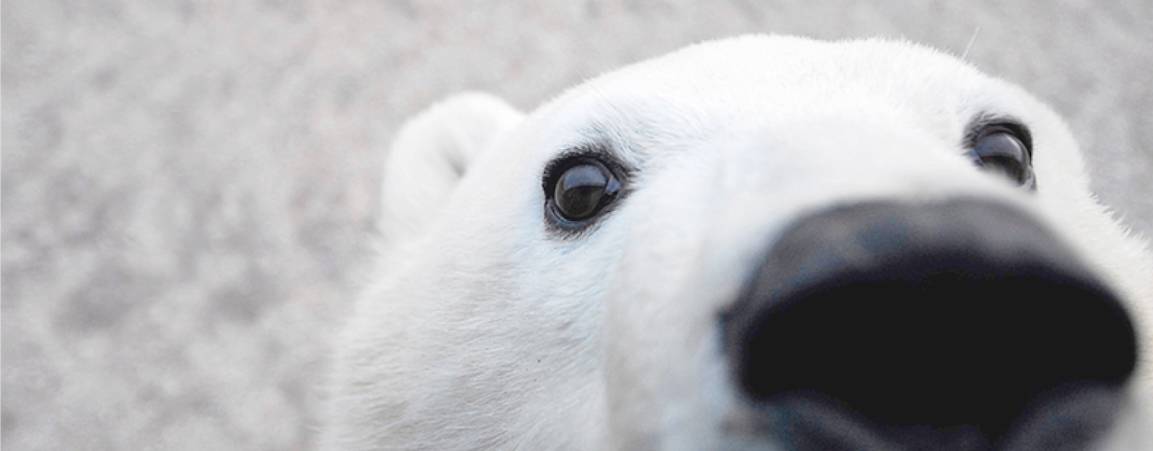The science is clear: oil and gas development in this area would pose an unacceptable risk to an already threatened polar bear population.
What’s happening
The question of whether to drill for oil and gas in the Arctic Refuge has fueled debate in the U.S. Congress for nearly half a century. The tax bill that passed this summer called for at least four new lease sales within the refuge over a 10-year period. In mid-October 2025, the Department of Interior announced it would hold an oil and gas lease sale for the refuge as soon as this winter and reinstate the seven refuge leases that had been canceled by the prior administration.
Why it matters
Polar bear mothers and cubs of the Southern Beaufort Sea polar bear population den on the Coastal Plain of the Arctic National Wildlife Refuge.
Polar bear cubs need a stable and uninterrupted denning process to survive
Cubs are born during the winter in dens hidden under the snow. At birth, they are blind, lightly furred, and weigh about one pound. During the first months of their lives, they stay sheltered in snow dens with their mother, depending completely on her for food, warmth, and protection. Families remain in the den until spring when the cubs are finally large enough to survive the rigors of outside Arctic conditions. The dens are invisible to someone on the surface, having no discernable markers.
Current den-detecting tools miss more than half of dens
Our scientists and colleagues have a long history of studying polar bear dens and den-detection methods in northern Alaska. This research shows that oil and gas activity pose a great threat to denning polar bears families hidden under the snow. Dens are difficult to detect with current technology, which has been shown to miss over half of known polar bear dens in a surveyed area. Denning polar bears are unable to simply move away from a disturbance without substantial risk to newborn cubs. While new detection technologies are promising, they require further testing in Alaska to finalize their operational utility.
Polar bears in this region are in decline
Additionally, sea ice loss from climate change is the greatest threat to polar bears, and the polar bears in this region are broadly considered one of the populations most at risk. Research has already shown this population declined by nearly 40% in the last 30 years. Rapid loss of sea ice in the Southern Beaufort Sea has resulted in decreased cub survival and fewer cubs being born, highlighting the need to enhance the protection of vulnerable maternal dens.
What we’re doing
Decisions affecting the Coastal Plain of the Arctic Refuge should be informed by science, and the science is clear: oil and gas development in this area would pose an unacceptable risk to an already threatened polar bear population. Polar Bears International is in active discussions with Alaska partners to further improve den detection tools, and we will continue to share this science with decision makers and industry leaders.

















